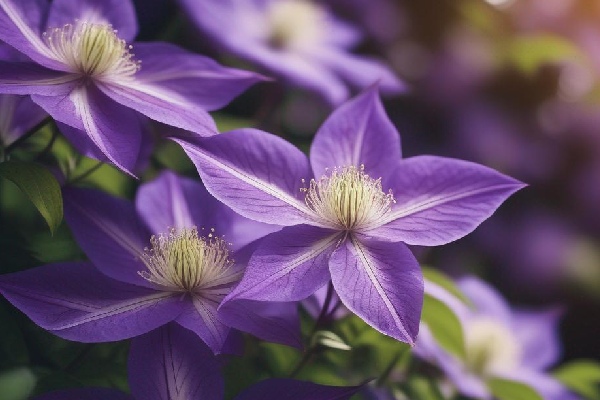All Posts
How to Plant Clematis
Clematis flowers are beloved for their stunning blooms and their ability to add vertical beauty to gardens, they are known for “queen of climbers.” Follow this guide to learn how to successfully grow clematis.
Choosing the Right Clematis Variety
When selecting clematis for your garden, some factors you are to consider, lkie mature height, flowering time, and preferred growing conditions. Popular varieties include “Nelly Moser,” “Jackmanii,” and “Henryi,” each with unique features to suit different tastes and landscapes.
For those with enough space to grow 10 or 20 feet tall clematis vines, there are many cultivars for options. Compact varieties also thrive in small gardens or pots on balconies. Standard clematis flowers typically have six to seven petals with a diameter of 5-6 inches. Flower colors range from white to burgundy, light purple to deep purple, and even some yellow ones.
A clematis vines may take several years to mature and begin vigorous flowering. To expedite the process and ensure success, it’s advisable to purchase plants that are at least two years old. Look for container-growing plants in quart or gallon sizes.
Selecting the Ideal Location for Clematis
While some clematis varieties may flower in partial shade (like “Nellie Moser” and “Henryii”), most thrive in full sun, preferably receiving six or more hours of sunlight each day. Well-draining soil rich in organic matter is essential. Clematis prefers moist, well-draining soil with a neutral to slightly alkaline pH. If your soil tends to be acidic, periodically use of limestone or a little wood ash can sweeten it. Before planting, ensure the area has enough space for the vines to grow, and consider providing sturdy trellises or support structures.
How to Plant and Care for Clematis
The best time to grow clematis is in early spring or fall. Prepare the soil by loosening it and adding compost, granular organic fertilizer, or well-rotted manure. Dig a hole twice the size of the root ball, gently place the clematis in the hole slightly deeper than it grew in the pot, so the first set of true leaves is just below the soil surface. Backfill with native soil. Water thoroughly and provide initial care to help establish strong roots. Water weekly in the first season to assist with establishment. If your clematis survives the first year, it’s likely to continue thriving. Mulching around the root of the plant helps retain moisture. Clematis is happiest with cool roots in a shaded area and warm sunlight on its leaves—covering the soil around the base will help keep it cool, and placing low perennial plant leaves in front of the vines will help provide shade.
Supporting and Training Clematis
Provide a sturdy plant support structure, such as trellis, arch trellis, or fence, for clematis. Use ties or clips to secure the vines to the support system, allowing space for growth and spreading. Regularly check and adjust the supports to prevent damage from strong winds or heavy rain. However, some types of clematis have dense climbing habits, and most are natural climbers. Like other climbers, the growing tips of clematis vines are searching for something to grasp, and if nothing is found, growth will cease. Ensure you provide something for it to climb on from the day one.
Clematis vines do not twine around something like pole beans or morning glories do; instead, they climb by wrapping their stems around something. Because these stems are not very long, anything with a diameter over 1/2 inch is too wide for the stems to twist around. Clematis is most easily grasped by materials such as twine, fishing line, wire, thin branches, wooden stakes, or steel rods. The more opportunities you provide, the better—consider adding some twine “assistants” even if you have a beautiful trellis, or cover it with trellis netting.

